Wyoming Chronicles - Unveiling the Wild Climate
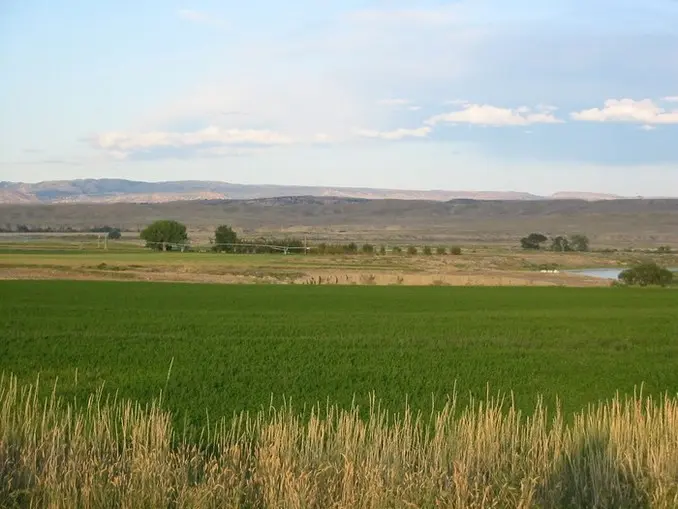
-Exploring the untamed beauty of Wyoming’s terrain and climate.
Hold on to your hat, darling! Wyoming is a rollercoaster of high altitudes, dry spells, gusty winds, icy chills, and scorching heat. It’s the wild west, and trust me, keeping bees here is no stroll in the park.
Wild Wyoming: A Snapshot
Wyoming sprawls across a whopping 92,000 square miles, with a mere 700 square miles being water. Now, picture this: only around 400,000 folks call this vast expanse home. We’re talking small-town charm, with populations ranging from 12,000 to 50,000 in our half-dozen cities. The rest of us? We cozy up in towns with fewer than 5,000 residents.
Wyoming’s open spaces are dreamy but sparse. You might clock 30 to 50 miles before spotting a lonely house, and in some parts, you could double that distance before hitting the next sign of civilization.
Nestled between mountains, Wyoming wears the crown of a mountainous state. The average elevation? A cool 6,700 feet above sea level. Without the peaks, it still stands at around 6,000 feet. Gannet Peak reigns supreme at 13,785 feet, while the northeast corner dips to a modest 3,125 feet.
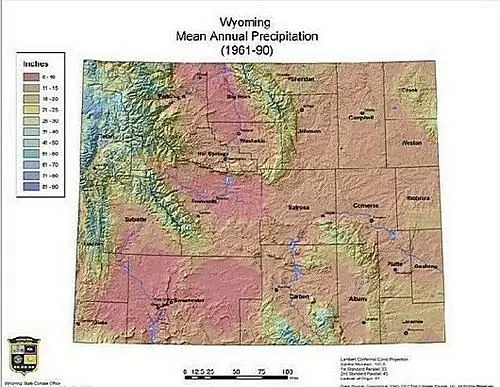
Here’s the kicker: Wyoming’s high altitude and latitude create a climate that’s a unique blend of north-meets-west. Think of it as sharing weather traits with areas 2,000 miles to the north, somewhere close to Hudson Bay in the Northwest Territories or the scenic Anchorage, Alaska. So, if critters and plants in Wyoming seem oddly familiar to their northern counterparts, you now know why.
In this vast landscape, climate is queen, and topography is her trusty sidekick.
The Liquid Gold: Water
Water is the crown jewel of Wyoming, despite those dazzling mountain photos with lakes and waterfalls. Reality check: Wyoming is mostly semi-arid to arid. That cascading mountain water? The basins soak it up faster than you can say “drought.”
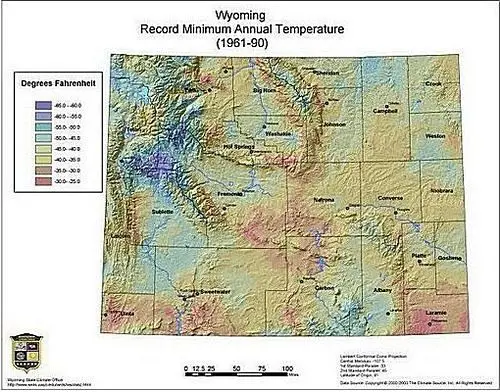
Precipitation? It’s a mixed bag, from a generous 90 inches in the mountains to a stingy 6 inches in the basins. Mountains sweep away the clouds, leaving basins high and dry. So, forget about the direction of storms; it’s the mountains that call the shots. At my place, I get about 15 inches of moisture a year. Five miles south? A cool 32 inches. Head north, and it’s a mere 8 inches. Wyoming’s precipitation plays favorites, my friend.
Most of Wyoming’s precipitation shows up as winter and spring snow, locked up in the mountains and slowly trickling down during May through July.
Chilling Tales: Temperature
Ice, Ice, Baby!
Wyoming doesn’t do warm and fuzzy. All areas shiver at -25 to -30 degrees Fahrenheit, and the higher altitudes brave temperatures as low as -65 degrees Fahrenheit. The glaciers in the northwestern quarter? They’re the last relics of the little ice age. Even the basins get a taste of extreme cold when inversions trap mountain air, turning warm days into frosty nights.
Sizzle in the Basins
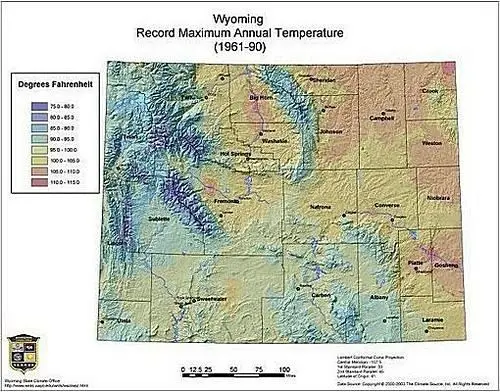
Hold onto your sunhat because Wyoming gets hot! Lower basins flirt with 115 degrees Fahrenheit, while most basins keep it cool at around 105 degrees Fahrenheit. But don’t let the heat fool you; Wyoming has an ace up its sleeve. The altitude-driven diurnal shift hits a staggering 50 degrees in summer. Yes, even on days when it feels like a cozy 100 degrees, blankets still make the evening cut.
In the mountains, an 80-degree day is the peak of summer warmth. And with the diurnal temperature swing, water thinks about freezing even on those hotter days.
Wyoming may sizzle, but it’s a short-lived affair. Most basins endure about a month with temperatures above 90 degrees, and almost half of the state keeps it cool with less than a week hitting that toasty mark.
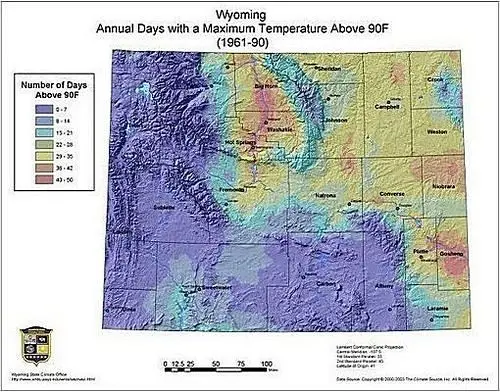
Winds that Roar
No beating around the tumbleweed—Wyoming’s the wind champion of the nation. Average wind speed? A breezy 13 mph. Add topography to the mix, and you’ve got a recipe for sudden wind changes that could make your hat fly faster than tumbleweed in a storm. Every year, a few souls find themselves lost in Wyoming’s vastness, thanks to unexpected blizzards crashing warm, sunny days.
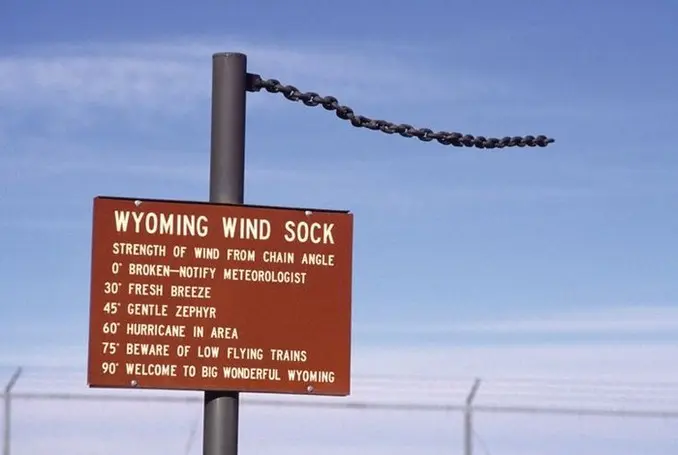
Picture this: the jet stream parks itself over Wyoming in winter. Sustained surface winds? A gale-force 40 mph, with gusts showing off at a brisk 60 mph for weeks on end. When the wind takes a breather in winter, trouble brews. Temperature inversions settle into basins faster than snowflakes in a storm. A calm spell often hints at the next blizzard about to make its grand entrance.
Life in the Drying Oven: Drought
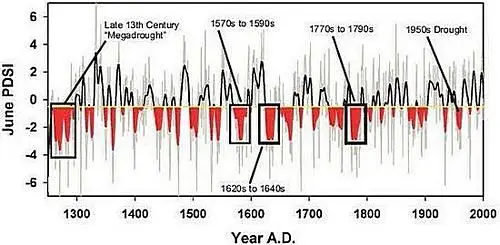
Living in an arid land means becoming pals with drought, and Wyoming’s no stranger to it. The west is caught in a lifetime drought, with Wyoming enduring over five years of extreme drought. The land’s thirst is real, my friend. Vegetation vanishing, wildlife under stress—it’s a scene straight out of a nature documentary, and the emotional toll is nothing short of heart-wrenching.
And yet, here’s the harsh truth: this might be the best it gets. Tree ring studies tell tales of more intense and prolonged droughts in Wyoming’s past. Imagine surviving in those times! Unfortunately, the forecast isn’t all sunshine and rainbows. With global warming, those brutal conditions might just make a comeback, and our modern needs demand far more resources than the good old days.
Greening Against the Odds

Plant growth in Wyoming is a dance with climate. Mountains boast a growing season that’s wet, cold, windy, and fleeting. Thanks to ample moisture, they flaunt a variety of plant life, but it’s slow and delicate.
Basins, on the other hand, rock a growing season that’s dry, hot, cold, windy, and short. The lack of moisture plays the villain, restricting plant growth.
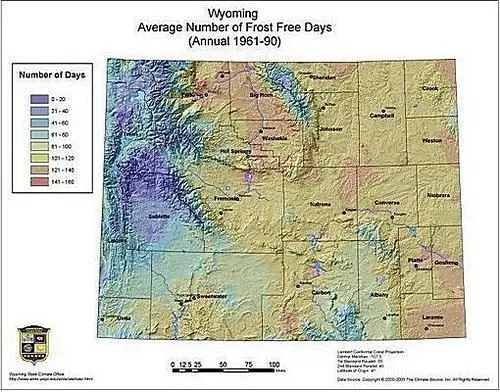
The chart spills the beans on frost-free days. Don’t be fooled; these aren’t consecutive days. Frost can sneak up anytime, especially near the mountains. Most basins enjoy around 100 frost-free days, while higher areas get less than three frost-free weeks.
The Bee’s Conundrum: Climate and Honey
Let’s be real, honey—Wyoming doesn’t roll out the red carpet for honeybees. Mountains offer the flora and water but are too chilly, with a season as short as a summer fling. Basins bring the heat and a longer season but lack the moisture and flora honeybees need for a sweet life.
Wyoming’s natural vibe? It’s not bee-friendly. Few feral hives venture there, and, with rare exceptions, no bees call it home. But here’s the buzz: with a touch of human magic—bringing in the right plants, water, and that Goldilocks climate—beekeeping becomes a reality.
Gratitude
Special shoutout to Jan Curtis and Kate Grimes for sharing their marvelous maps. For an in-depth look at Wyoming’s captivating climate, dive into their climate website.
-Cheers, D 🌸🐝
